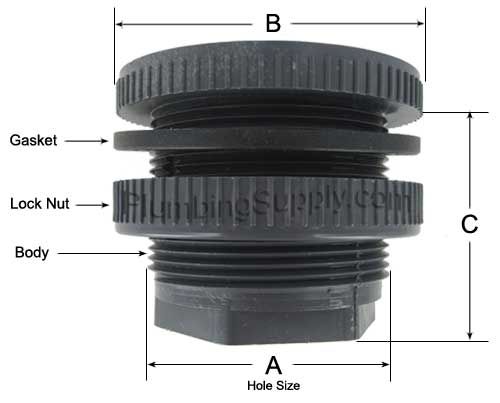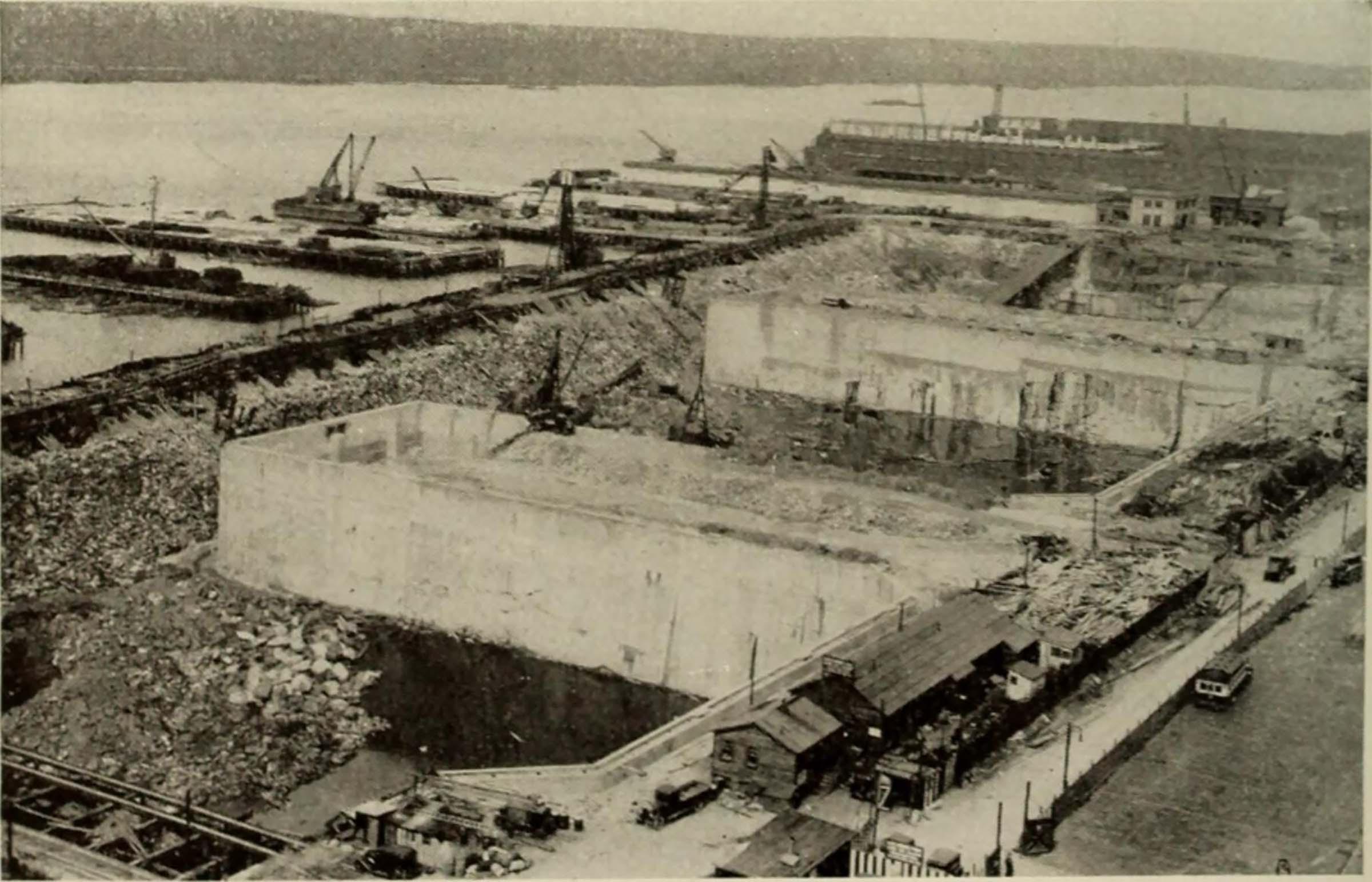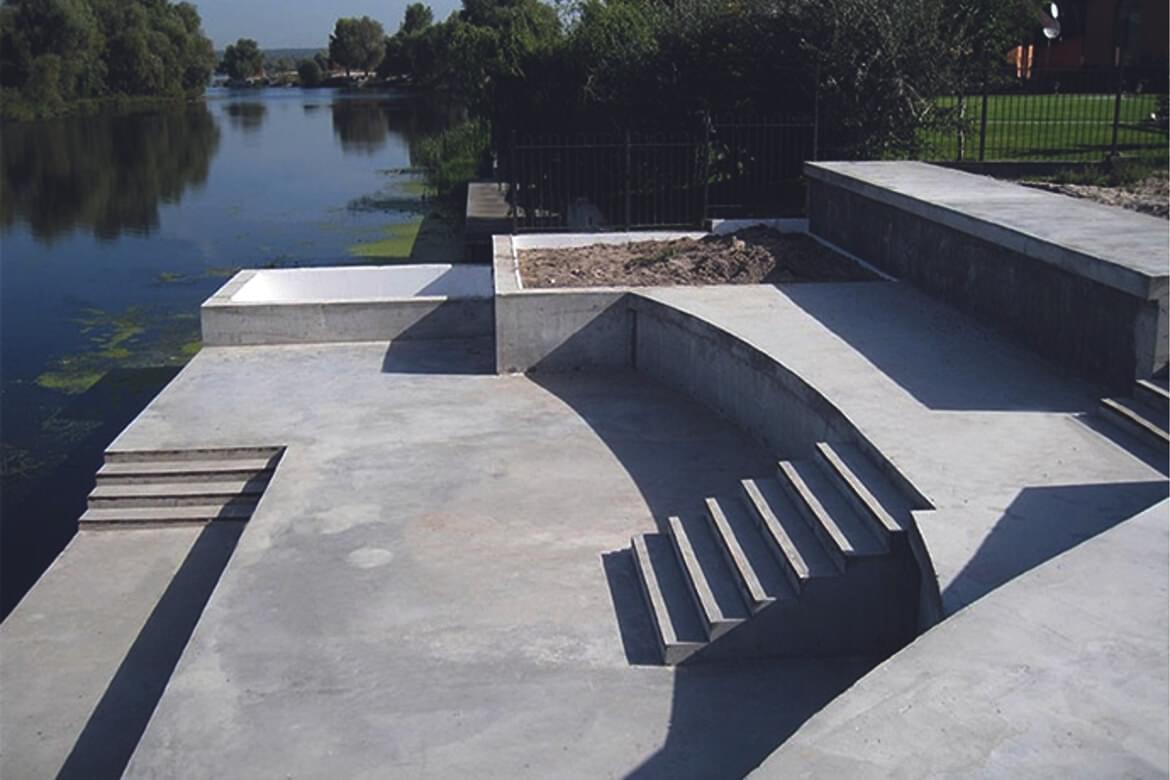Bulkhead on Lake Livingston: A Detailed Guide to Modern Building Practices
Checking Out the Different Uses of Bulkhead Frameworks in Modern Architecture
Bulkhead structures play a substantial duty in modern-day style, serving both aesthetic and useful functions. They can define rooms, improve storage options, and improve lighting. In business settings, they function as centerpieces that reflect brand name identification - Bulkhead on Lake Livingston. In addition, their integration typically supports sound monitoring and lasting techniques. Understanding the complete extent of their applications discloses much concerning modern layout fads and customer experience. What cutting-edge usages of bulkheads might arise in the future?
Defining Bulkhead Structures
Bulkhead structures play a critical duty in modern-day design, working as important parts in different building layouts. These frameworks are normally specified as elevated platforms or ceilings, frequently made use of to hide mechanical systems, circuitry, or pipes. Bulkheads can be discovered in both residential and business setups, where they supply a seamless mix of functionality and aesthetic appeals. Their layout can incorporate illumination fixtures and various other decorative elements, enhancing the total visual appeal of a room.
Commonly built from materials such as timber, metal, or drywall, bulkheads can be personalized to fit the building design and demands of the structure (Bulkhead on Lake Livingston). They serve not just to conceal unsightly infrastructure but additionally to develop defined areas within open spaces. By handling the circulation of a room, bulkheads add to the spatial organization, making them a considerable aspect of modern architectural practice. As a result, their meaning envelops both visual and functional dimensions
Practical Applications in Residential Style
Bulkhead structures play an essential function in residential layout by assisting in area optimization techniques that make the most of usable locations. In addition, they add visual layout elements that boost the visual appeal of living spaces. Furthermore, these frameworks supply crucial architectural support solutions, ensuring the honesty and security of the home.
Space Optimization Approaches
As contemporary domestic layouts significantly prioritize efficient use space, cutting-edge approaches arise to optimize capability without sacrificing looks. One prominent technique entails the assimilation of bulkhead structures, which can mark locations while supplying important storage options. These frameworks can be utilized to produce vertical storage units that enhance both company and access. Furthermore, multi-functional furniture, such as convertible sofas and foldable tables, matches bulkhead styles, allowing areas to adjust to differing demands. Open up layout better enhance spatial circulation, encouraging adaptability in operation. Integrating integrated shelving and recessed lights within bulkheads additionally adds to a structured setting, making sure that every square inch of space is used properly and sympathetically within the overall layout.
Visual Style Elements

Architectural Assistance Solutions
In modern domestic layout, an efficient architectural support solution is crucial for preserving the honesty of spaces while optimizing design and functionality. Bulkhead structures play a substantial function in this situation, working as both support and partitioning components. They can conceal mechanical systems, such as plumbing and electrical wiring, while supplying support to the ceiling and flooring systems. By purposefully positioning bulkheads, architects can produce defined areas within open layout, enhancing functionality without compromising architectural stability. Additionally, these structures can suit lights components, contributing to both aesthetic appeals and usefulness. To summarize, bulkhead structures are important in household style, using flexible assistance solutions that enhance both the performance and visual charm of living areas.
Enhancing Aesthetics in Business Spaces
When industrial areas welcome ingenious bulkhead structures, they not only define physical limits yet additionally substantially enhance the overall aesthetics of the atmosphere. These building elements work as aesthetic focal points, attracting attention and creating a sense of intrigue. By including varied materials such as glass, wood, or metal, bulkheads can reflect a brand name's identification and goal, contributing to a natural layout.
The tactical placement of bulkheads can manipulate light and darkness, adding deepness and measurement to or else flat rooms. This interplay can transform an industrial location into a welcoming environment, motivating customer engagement. In addition, using shade and texture in bulkhead style can stimulate specific feelings, enhancing the general customer experience. Ultimately, the thoughtful assimilation of bulkhead frameworks elevates the aesthetic charm of commercial spaces, making them not just useful but also aesthetically enchanting, thus cultivating a lasting impression on visitors.
Acoustic Performance and Noise Monitoring
Reliable acoustic efficiency plays a vital function in modern-day architecture, particularly within commercial spaces where audio management is essential. Bulkhead structures can considerably enhance acoustic high qualities by taking in sound, minimizing echo, and mitigating noise transfer in between areas. These features are specifically beneficial in atmospheres such as workplaces, cinemas, and restaurants, where More about the author clear communication and an enjoyable acoustic experience are critical.
The strategic placement and style of bulkheads can aid create sound-buffer zones, efficiently separating noisy locations from quieter ones. Products made use of in bulkhead construction, such as acoustic panels and soft surfaces, contribute to their sound-dampening abilities. Furthermore, the unification of bulkheads permits for the integration of sound-absorbing components without endangering aesthetic charm. By dealing with acoustic efficiency, architects can develop harmonious atmospheres that improve comfort, improve user experience, and promote productivity, making bulkheads a crucial component in the design of contemporary industrial areas.
Incorporating Bulkheads for Efficient Space Utilization
Although often ignored, the assimilation of bulkheads in building style can substantially improve space utilization in modern structures. These architectural components serve several sensible functions, using a way to conceal mechanical systems, electrical wiring, and pipes without jeopardizing visual appeals. By purposefully positioning bulkheads, architects can create defined areas within open flooring plans, thus facilitating much better organization and circulation.
Bulkheads can integrate storage remedies and illumination attributes, maximizing the functionality of otherwise lost vertical space. In domestic setups, they might delineate areas such as cooking areas or living locations, while in commercial rooms, they can enhance the efficiency of layouts by clearly marking paths and work locations.
Ultimately, the thoughtful combination More Info of bulkheads adds to an extra orderly and visually appealing environment, permitting versatile rooms that can evolve with the needs of their residents. This approach not just enhances area however likewise promotes an extra unified communication between form and function.
Bulkheads in Public Style

Building Aesthetic Enhancements
While lots of building aspects aim for performance, bulkheads in public architecture offer a double objective by enhancing visual appeal. These frameworks commonly produce aesthetic rate of interest with their layout, integrating effortlessly with bordering aspects. By utilizing different materials, textures, and colors, bulkheads can add to a distinct identity for public areas, such as airports, museums, and libraries. Their tactical positioning helps to delineate locations, leading visitors while adding depth to the total design. Additionally, bulkheads can highlight lights, producing dynamic environments that transform throughout the day. This aesthetic improvement not only raises the site visitor experience however additionally fosters a local color, making bulkheads an important consideration in modern-day public architecture. In general, bulkheads embody the combination of kind and function.

Structural Support Solutions
As architects look for innovative means to improve the architectural integrity of public spaces, bulkheads arise as crucial elements in the layout and building and construction process. These structures supply crucial support, particularly in locations subject to hefty foot web traffic or vibrant loads. By dispersing weight equally, bulkheads assist avoid structural failure while enabling versatile design options. In big places, such as stadiums and convention facilities, bulkheads are often integrated right into Discover More Here the overall architectural structure, ensuring stability and security. In addition, they can help with the incorporation of utilities and mechanical systems, contributing to the performance of space usage. Eventually, bulkheads represent an essential service in modern-day public style, reinforcing both performance and security in community-focused atmospheres.
Environmental Management Measures
Integrating ecological protection actions into public style has actually become significantly important as urban developers prioritize sustainability together with structural support. Bulkhead structures serve a twin objective in this respect, serving as barriers against erosion and flooding while simultaneously improving the aesthetic charm of metropolitan landscapes. Their design often includes natural components such as plant life, which can improve air high quality and give habitats for wildlife. Additionally, bulkheads can be engineered with permeable products that enable water absorption, minimizing drainage and advertising groundwater recharge. This integration of ecological factors to consider not only preserves the environment yet also fosters neighborhood resilience against environment adjustment. By making use of bulkheads efficiently, architects contribute to lasting city growth that aligns with contemporary ecological goals.
Future Patterns in Bulkhead Style
Arising trends in bulkhead design mirror an expanding emphasis on sustainability, innovation, and performance in modern-day architecture. Developers are increasingly integrating environment-friendly products, such as recycled composites and bioplastics, to minimize environmental effect. Furthermore, the integration of smart technology is becoming common, making it possible for bulkheads to offer multi-functional purposes, consisting of energy storage and climate control.
In urban setups, modular bulkhead systems are acquiring traction, offering flexibility in design and simplicity of installment. These systems can be adjusted to different landscapes, permitting for effective room application. In addition, aesthetic factors to consider are evolving; bulkheads are now being designed to improve visual allure, often including artistic components that resonate with local culture.
As climate resilience comes to be a concern, future bulkhead layouts will likely focus on flood protection and stormwater administration, making certain architectural integrity while attending to ecological difficulties. This change represents an alternative approach to architecture that meets both environmental responsibilities and human demands.
Often Asked Questions
What Products Are Generally Utilized for Bulkhead Building And Construction?
Typical products for bulkhead construction consist of concrete, steel, timber, and composite products. These alternatives offer resilience, structural stability, and resistance to ecological variables, making them ideal for numerous applications in construction and engineering tasks.
How Do Bulkheads Influence Building Energy Performance?
Bulkheads improve developing power effectiveness by offering thermal insulation and minimizing air leak (Bulkhead on Lake Livingston). They help maintain indoor temperatures, thus reducing heating and cooling down demands, inevitably causing reduced energy prices and enhanced ecological sustainability
Exist Any Kind Of Building Codes Certain to Bulkhead Frameworks?
Yes, building codes specific to bulkhead frameworks exist, differing by area. These regulations generally attend to safety and security, structural stability, and access, making sure that bulkheads fulfill needed standards for construction and layout within a provided territory.
Can Bulkheads Be Easily Modified or Eliminated Later On?
Bulkheads can usually be modified or eliminated, depending on their style and building and construction. Such changes might need careful preparation and adherence to building codes to guarantee structural integrity and safety and security are preserved throughout the process.
What Are the Expenses Associated With Mounting Bulkhead Frameworks?
The prices related to mounting bulkhead structures can differ considerably, generally influenced by materials, style complexity, and labor. Generally, expenses vary from moderate to high, depending upon the job's details needs and place.
Bulkhead frameworks play a vital duty in modern architecture, offering as necessary elements in different building designs. Bulkhead structures play an important role in residential style by promoting area optimization techniques that make the most of usable locations. Usually neglected, the assimilation of bulkheads in building design can substantially enhance room application in modern-day structures. As engineers seek ingenious methods to improve the architectural stability of public areas, bulkheads emerge as important parts in the design and construction procedure. The prices associated with installing bulkhead structures can vary considerably, generally affected by products, design complexity, and labor.